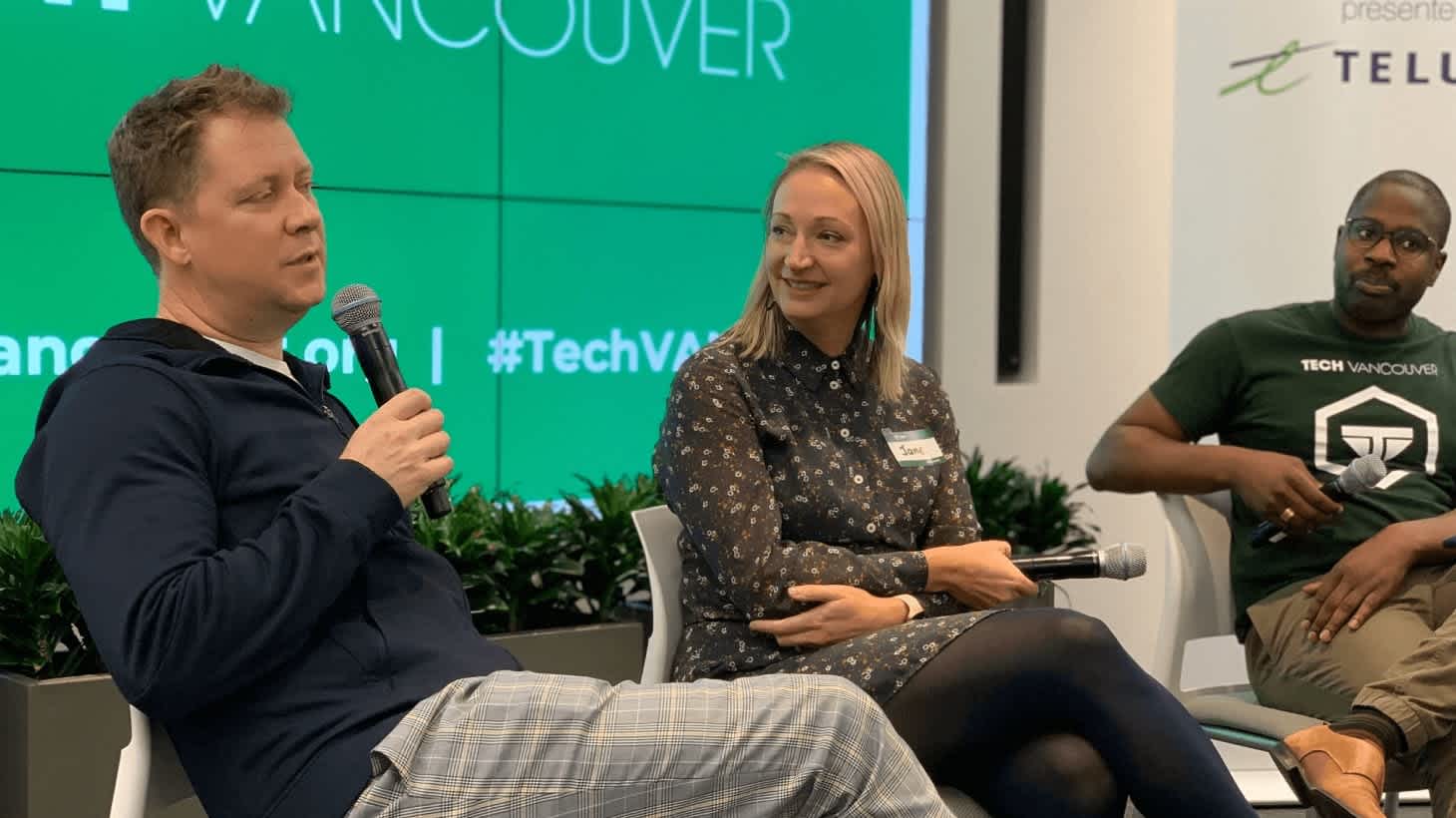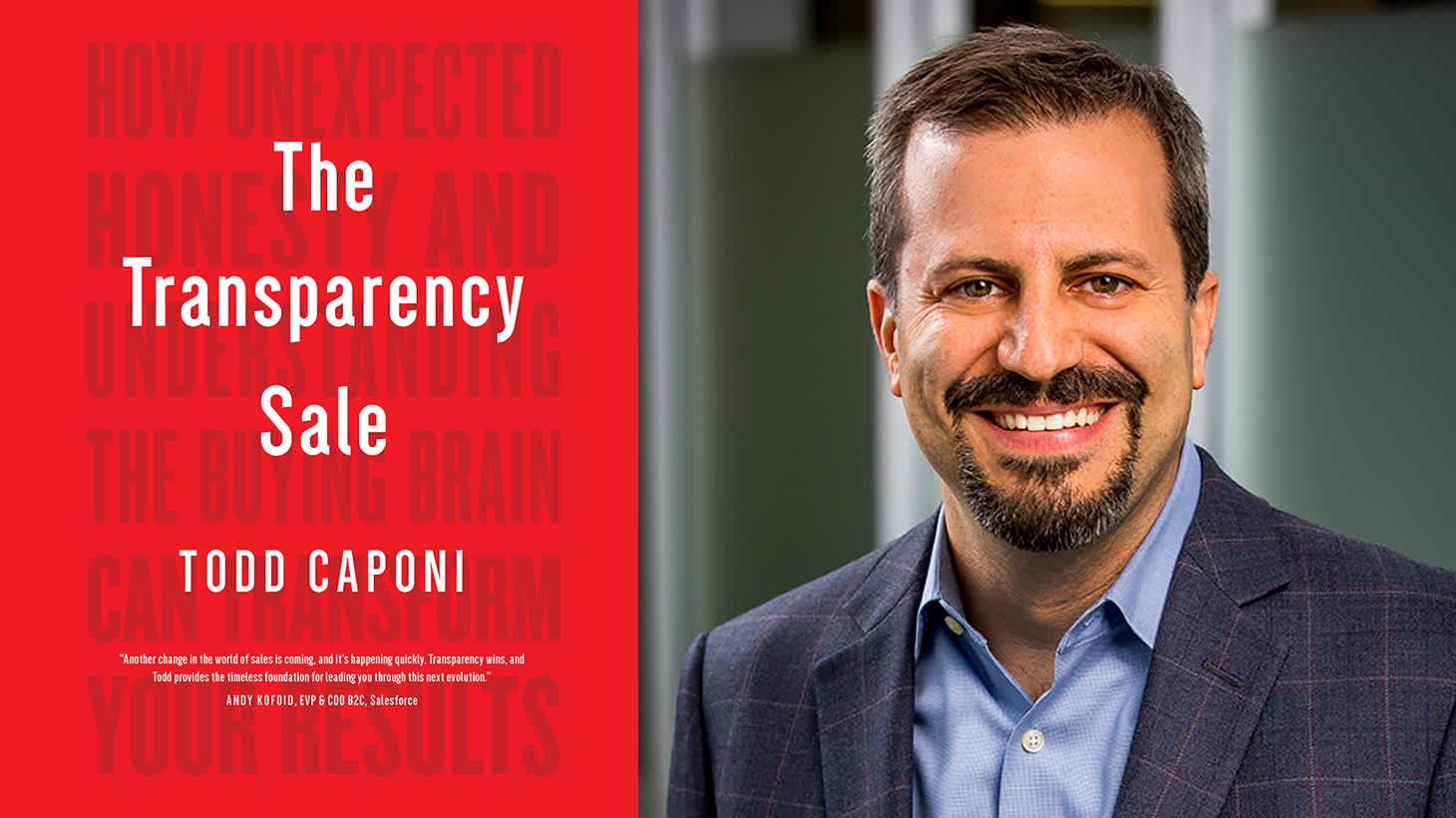← Go back
Sales Software: 8 Highlights from the TechVancouver November Edition


In my role as CEO of Pieoneers, I love attending networking events for the Vancouver tech community. Not only do I get to meet many talented people, I also learn a lot.
This month, I went along to the TechVancouver November Edition, for a panel on one of the top skills in business and in life—sales.
TechVancouver holds these events every month, inviting tech innovators to share their expertise with local leaders like me, so we can expand our knowledge and network.
As the sales process is a mystery to me, I was thrilled to learn from Jane Van Sickle, Senior Director of Sales & Onboarding at Unbounce, and Kris Hartvigsen, Founder and CEO of Dooly.
Here are some of my handpicked highlights from the many insights they shared this month:
1. Unbounce is about more than landing pages
Unbounce is an inbound sales company that creates landing pages to help customers increase their conversions, but they do much more to serve their clients.
This includes a trial methodology, an onboarding team, an account executive team, and a launch team for customers in the Software as a Service (SaaS) business.
This is really critical for businesses, to make sure they are getting their customers to activate the features where they're going to see success.
If they don't see that, they can leave at any time, and they can go and work with someone else who's going to show them the way.
“We know it is critical that in the SaaS business, for customers to stay, they need to adopt your product, and they need to see success,” says Jane.
2. Dooly is the ideal portrait of a salesperson
Dooly is sales enablement software to help salespeople more efficiently update their CRM and find data to support their deal cycle. Or as Kris puts it, it is “the ideal portrait of a salesperson.”
But at the same time, it looks at everything in your notes and
a white paper, a case study, or just talking points to support what's happening in your deal cycle.
So we created this single pane of glass that's really, really incredibly user-friendly, that allows salespeople to just interact with it. It does all the different things that they need to have done.
We sell freedom and we sell it to salespeople. Every salesperson spends an inordinate amount of their time doing admin work, and that is taking away from their paycheck.
3. Even successes like Slack needs a concierge
So we see a lot of focus on the concierge-like initiation of the product.
This product seemed like it worked really well, but how does it work really well for me in my role?
You can automate onboarding all you want, but once somebody gets to the product, they have this, "Now what?" moment.
I believe customer success has a large role in not just helping to drive adoption, but also to personalize that adoption into a work organization.
They've got a community of product managers who fell in love with
and it went viral. So they didn't really need a sales team. They needed a customer success team.
Take Slack. They've done incredibly well.
I do believe that's going to change how consumers buy a product, how businesses buy a product, because the users are much more involved in the buying process now.
“We're in this world where product-led growth is really taking off,” says Kris.
4. As a founder, you have to be able to sell your own product
You should be the closest and most intimate person to that product. I think that's really important.
“If a founder can't sell the product, they should sure as hell not expect anybody else to sell it,” said Kris.
As Jane puts it:
I really don't believe you can separate those two things—you need to be successful at both.
Even if you don't think of yourself as a salesperson, if a founder has a product, they have to go sell it. And if you're a salesperson, you’ve got to have something to sell.
5. Read The Transparency Sale—and never give a discount
Kris recommended reading Todd Caponi’s latest book The Transparency Sale: How Unexpected Honesty and Understanding the Buying Brain Can Transform Your Results.

Never, ever, ever give somebody a discount. Pay them in the form of a discount.
The buyer has given you all of their signals, all of the things that are important to them. What have you done to tell them what's important to you and your business?
What Todd Caponi says in his book, which I really, really liked, is that when you're negotiating, there are all of these things that your buyer is trying to get discounts and deals off of.
As Kris explains, this means telling the buyer what is important to your business. For example, getting an annual upfront payment or keeping particular clauses in legal contracts.
And then offering to pay the buyer for that, in the form of a discount on the value of the deal.
Help them understand why that can't be and why certain things are worth what they are. And as soon as you put a value on it, they don't grind you don't past that value.
“I actually started using it and it works beautifully. The buyer doesn't know what's important to you. All they know is they need to ground you down,” says Kris.
6. Get up, get out, and do a hell of a lot of research
I don't think there's a magic formula for it, but I would say get up, get out of the office, and talk to people.
Test the living daylights out of all your hypotheses before you actually start to sell. Then really dig into the needs and try to relate them through your product, back to whoever's buying it.
If you build something and then test it, you're too far gone.
You really need to understand the customer and their needs and their pains and their drivers, so that you build the right thing.
“You need to do a ton of
before you put a product in the field,” says Kris.
7. Inbound and outbound sales are the same, but different
Because if you start spending money and you don't have those things ready and in place, then you're not going to be efficient and you're going to be wasting some of that money.
You really need to know who you want to specifically be contacting, which should fall within the value that you give to your segments, and that you have the contact information you need.
You want to have your segments down pat.
So you have to have processes in place and make sure your lead flow is all working, so that you're able to get a targeted list.
“When you're doing outbound, you choose who your leads are, and when you're doing inbound you don't really,” says Jane. “You're kind of capturing that.”
Kris added that sometimes it's just the company you work for and the business model you have that's going to dictate whether inbound will work with outbound.
You can try to market towards that and try to drive that inbound engine, but at the end of the day, there are certain products that some people have to push. That’s just a reality.
You can't tell the market to look for you. The market is either looking for you or they aren't.
8. Passion is essential—unless you’re all about the dollars
I also think that every person's mindset is going to be different and that's why sales people are creatives at heart. Some people will be really passionate about the product.
If you don't possess one of those traits, it's going to be very hard for you to make that sale, unless you're totally coin operated and you just see dollar bills on everybody's forehead.
“I believe you need to be passionate about something in the sales process and it either has to be the buyer, the industry, or the product you're selling,” says Kris.
Words of wisdom
As you can tell, I enjoyed every minute of this month’s TechVancouver. To wrap up, here are my favourite words of wisdom from Jane and Kris, plus some of my own thoughts on the topic.
“One thing I always look for when I hire people is do they have a sense of belief. If you don't believe that you can win, or that you're going to be successful, you're not going to be.”
— Jane
“You're always learning in sales, you should be a professional learner.”
— Kris
As for me, I agree with Kris that sales is a constant learning process. Probably like everything else in life, the art of sales is never-ending.
Even with years of experience as a company CEO, I still see myself somewhere in the beginning of this journey.
While sales has a very pragmatic side, like quarterly goals, to me it has always been about understanding people—not only what they want to achieve, but also why they want to get there.
One book I found to be inspirational in this regard is Houses Made of Wood and Light: The Life and Architecture of Hank Schubart by Michele Dunkerley with Jane Hickie.

The book tells the story of Hank Schubart, an architect from Salt Spring Island, BC, and explains how Hank sold his services, by “Painting a Picture.”
Hank never focused on explaining why he was the right architect for the job or why his price was better than his competitors.
He simply drew sketches to help his clients imagine what it was going to be like to live in the house.
My takeaway from all of this is that sales is a complex topic. Sometimes even scary. Like public speaking.
But it’s really about creating a human connection built on understanding and passion and when you get to do it from the heart, you really enjoy making those human connections.
At Pieoneers we are passionate about our clients. We do our research, ask questions, keep an open mind, and we really, really love our job.
Reach Out to Usor Book an Appointment
Find out how we can bring the human touch to your next website or mobile app development project!

Olena Tkhorovska
CEO + Co-Founder